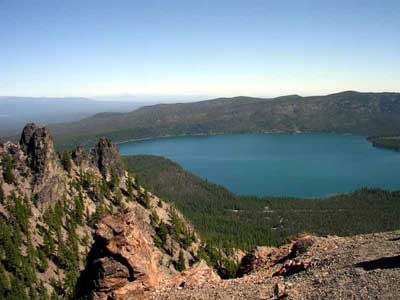MIT Experimental Petrology Laboratory
Department of Earth, Atmospheric & Planetary Sciences
Building & Room: 54-1220
Massachusetts Institute of Technology
Cambridge, MA 02139
E-mail: petrolab-www@mit.edu
| Subduction zone magmas
| Origin of Lunar basalts
| Martian mantle melting and water on Mars
|
| Oregon High Lava Plains
| Diffusion in mantle minerals
| Core formation
|
* Newbury volcano crater
OREGON HIGH LAVA PLAINSThis research is part of a collaborative effort funded by the Continental Dynamics Program of the National Science Foundation's Earth Sciences Division. Our other collaborators on the project include scientists from the Carnegie Institution of Washington; Arizona State University; Miami University of Ohio; The University of Texas, El Paso; Oregon State University; University of Rhode Island; and the US Geological Survey. The project seeks to establish a better understanding of why the Pacific Northwest, specifically eastern Oregon's High Lava Plains, is so volcanically active. This region, chosen for study because of its accessibility, its high volcanic flux (this the most volcanically active area of the continental United States), and its relatively young age, provides the team with an interesting and challenging problem. None of the accepted paradigms about crustal formation and magmatism fit eastern Oregon. By applying numerous techniques ranging from geochemistry and petrology to active and passive seismic imaging to geodynamic modeling, we will examine an assemblage of new data that we hope will provide key information about the roles of lithosphere structure, tectonics, flat-slab subduction, slab roll-back, and plumes as instigators of aerially extensive magmatism continuing from plate margins into the interior of the continent. Our part of the project involves experimental and field studies of primitive lavas from young volcanic centers across Oregon's high lava plain. We are currently working on Newberry volcano, Diamond Craters in central Oregon and Jordan Valley volcanic field in eastern Oregon. |
![]()
![]() E-mail: petrolab-www@mit.edu /
©2009-2012 Massachusetts Institute of Technology
E-mail: petrolab-www@mit.edu /
©2009-2012 Massachusetts Institute of Technology
 National Science Foundation
National Science Foundation